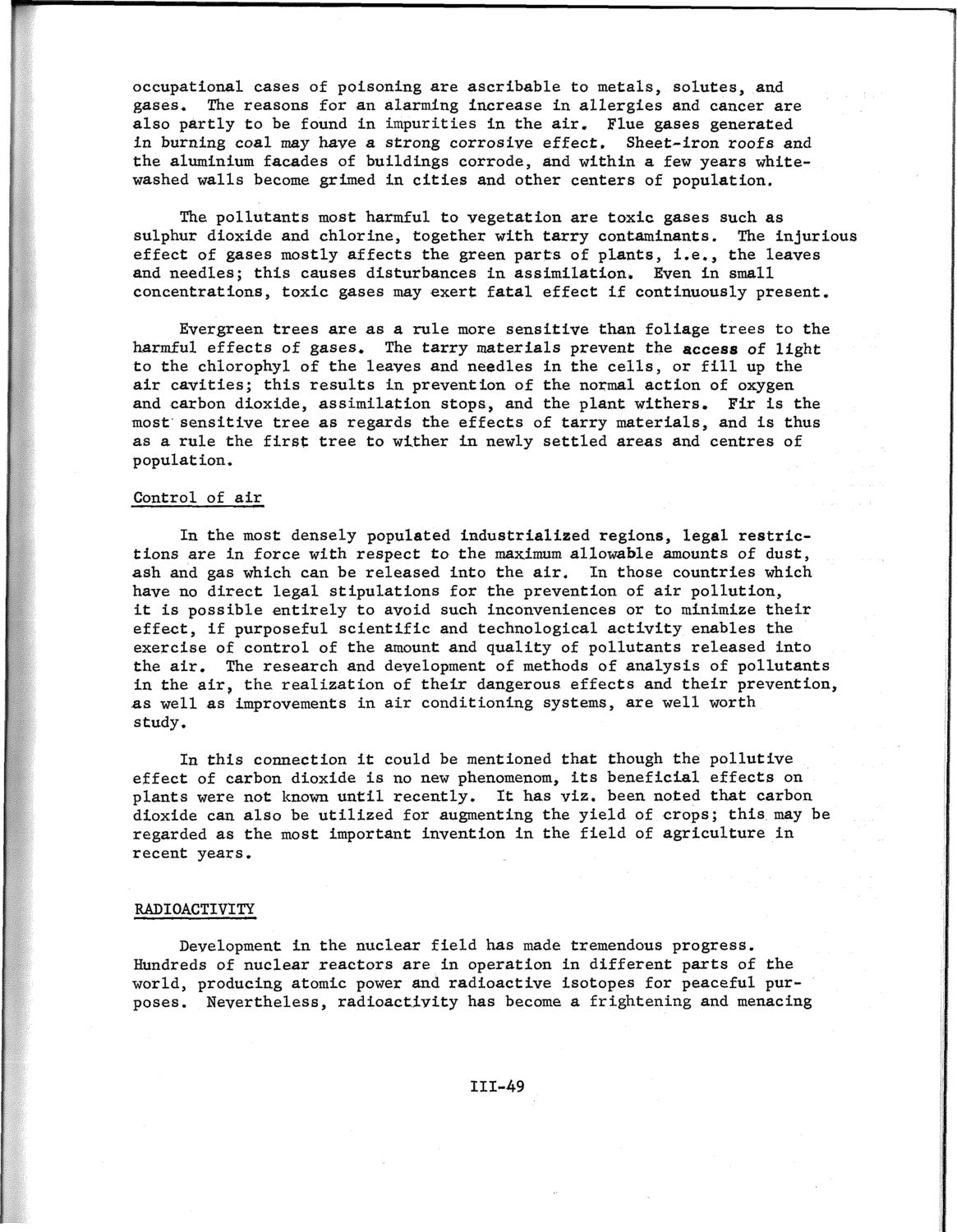| |
| |
Caption: SWE - Proceedings of the First International Conference of Women Engineers and Scientists
This is a reduced-resolution page image for fast online browsing.

EXTRACTED TEXT FROM PAGE:
occupational cases of poisoning are ascribable to metals, solutes, and gases* The reasons for an alarming increase in allergies and cancer are also partly to be found in impurities in the air. Flue gases generated in burning coal may haye a strong corrosive effect. Sheet-iron roofs and the aluminium facades of buildings corrode, and within a few years whitewashed walls become grimed in cities and other centers of population. The pollutants most harmful to vegetation are toxic gases such as sulphur dioxide and chlorine, together with tarry contaminants. The injurious effect of gases mostly affects the green parts of plants, i.e., the leaves and needles; this causes disturbances in assimilation. Even in small concentrations, toxic gases may exert fatal effect if continuously present. Evergreen trees are as a rule more sensitive than foliage trees to the harmful effects of gases. The tarry materials prevent the access of light to the chlorophyl of the leaves and needles in the cells, or fill up the air cavities; this results in prevention of the normal action of oxygen and carbon dioxide, assimilation stops, and the plant withers. Fir is the most sensitive tree as regards the effects of tarry materials, and is thus as a rule the first tree to wither in newly settled areas and centres of population. Control of air In the most densely populated industrialized regions, legal restrictions are in force with respect to the maximum allowable amounts of dust, ash and gas which can be released into the air. In those countries which have no direct legal stipulations for the prevention of air pollution, it is possible entirely to avoid such inconveniences or to minimize their effect, if purposeful scientific and technological activity enables the exercise of control of the amount and quality of pollutants released into the air. The research and development of methods of analysis of pollutants in the air, the realization of their dangerous effects and their prevention, as well as improvements in air conditioning systems, are well worth study. In this connection it could be mentioned that though the pollutive effect of carbon dioxide is no new phenomenom, its beneficial effects on plants were not known until recently. It has viz. been noted that carbon dioxide can also be utilized for augmenting the yield of crops; this may be regarded as the most important invention in the field of agriculture in recent years. RADIOACTIVITY Development in the nuclear field has made tremendous progress. Hundreds of nuclear reactors are in operation in different parts of the world, producing atomic power and radioactive isotopes for peaceful purposes. Nevertheless, radioactivity has become a frightening and menacing III-A9
| |